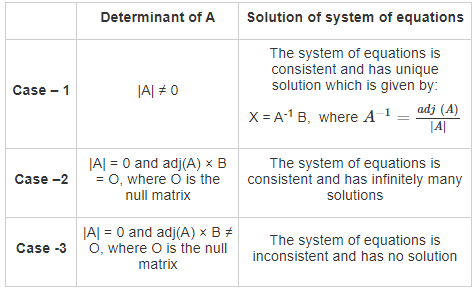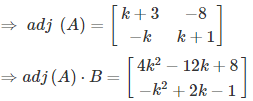Solutions

Let us consider the system of linear equations:
a11 × x + a12 × y = b1
a21 × x + a22 × y = b2
We can write these equations in matrix form as: A X = B, where


Calculation:
Given: (k + 1) x + 8y = 4k and kx + (k + 3)y = 3k - 1

As we know that, for infinite solution |A| = 0 and (adj (A)) × B = O, where O is the null matrix then the system of equations is consistent and has infinitely many solutions.
⇒ (k + 1)(k + 3) - 8k = 0
⇒ k2 - 4k + 3 = 0
⇒ k = 1 or k = 3
Now let's calculate (adj (A)) × B

Now by using (adj (A)) × B = O, where O is the null matrix, we get
⇒ 4k2 - 12k + 8 = 0 and - k2 + 2k - 1 = 0
⇒ k2 - 3k + 2 = 0 and k2 - 2k + 1 = 0
⇒ k = 1 or 2 and k = 1
So, for k = 1 given system will have infinitely many solutions.
Hence, there are 1 value of k for which the given system will have infinitely many solutions.



 Get latest Exam Updates
Get latest Exam Updates 





 ×
×






